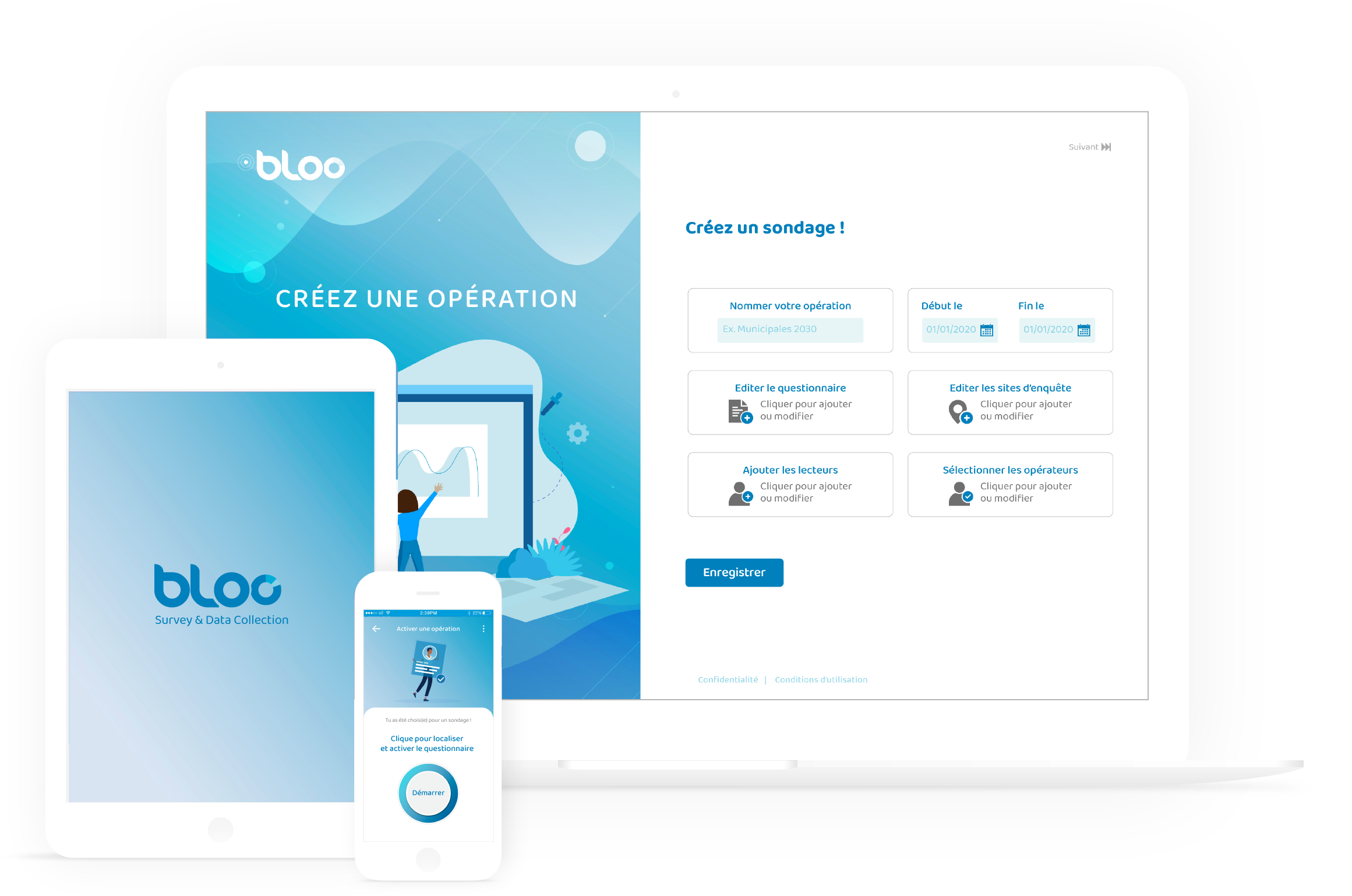
How to collect demographic data for an effective market research study?
Boost your market research and study: 5 strategies to collect demographic data
What is market research? Example of market research How market research can help your business What are demographic data types? Different types of demographic data Most common socio-demographic questions
gender (male/female), age, place of residence (city/country), marital status (single/married/divorced/separated), number of dependents, profession, education level, and eating habits.
 Close up hands using smartphone[/caption]
How can this data be used for market research? How to collect demographic data for market research? Tools and methods available to collect demographic data
Traditional paper or online surveys; Using focus groups; Analyzing user behavior on your website; Using mobile tracking to obtain information on customers; Directly collecting data from the government; Asking employees to collect information and share it with the team.
Steps to collect demographic data Resources and services available to collect demographic data
Today, businesses face a highly competitive environment. To succeed in their projects and achieve their goals, they need to collect effective demographic data for market research.
How to collect this socio-demographic information? What analysis tools to use and what type of questions to ask? In this article, we discuss key strategies for boosting your market research and study so that you can get the desired results for your product or service.
Market research is a systematic analysis method that combines demographic, sociocultural, and economic data to try to understand consumers’ lifestyles and habits.
It also provides insights into how a product or service can be sold. The main objective of market research is to precisely target the target audience that the brand or company wants to reach.
Definition and objectives
Market research is an in-depth investigation aimed at collecting, organizing, analyzing, and interpreting specific information about a particular target group. The data collected is then used to identify business opportunities and help companies make smarter decisions related to their products and services.
The ultimate goal of market research is essentially to ensure that the proposed product or service meets customer needs and expectations.
A classic example of market research consists of first identifying different target groups: their level of information, their socio-demographic characteristics (age, gender, income), their eating habits or even their cultural tastes.
Then, a questionnaire is distributed to these target groups to survey their views on the products and services offered by the company.
Finally, the collected results can be used to develop an ad hoc marketing strategy for each group.
When it comes to marketing and financial investment, it is important for businesses to know exactly how their current and future customers are distributed. This allows them to implement strategies tailored to each target group.
A good market analysis will enable companies to have a clearer idea of the current and future trends that influence the sector in which they operate, as well as the opportunities they can seize.
Demographic data reveal valuable information about the people who make up a given population and can be collected in various ways, including questionnaires, online or phone surveys, and even on TV.
The main demographic characteristics are gender, age, education level, religion, ethnic origin, income, and lifestyle.
Researchers typically collect the following data to gather socio-demographic information:
Once the socio-demographic data has been collected and analyzed properly, it can help businesses make strategic marketing decisions when compared to current economic data.
For example, if a survey shows that the majority of consumers in a certain area are between 25 and 35 years old, then it makes sense for a brand or product to focus on this group to maximize its visibility.
There are different tools and methods available to collect demographic data, such as traditional paper or online surveys, focus groups, analyzing user behavior on your website, using mobile tracking to obtain information on customers, directly collecting data from the government, or asking employees to collect information and share it with the team.
Close up hands using smartphone[/caption]
How can this data be used for market research? How to collect demographic data for market research? Tools and methods available to collect demographic data
Traditional paper or online surveys; Using focus groups; Analyzing user behavior on your website; Using mobile tracking to obtain information on customers; Directly collecting data from the government; Asking employees to collect information and share it with the team.
Steps to collect demographic data Resources and services available to collect demographic data
Today, businesses face a highly competitive environment. To succeed in their projects and achieve their goals, they need to collect effective demographic data for market research.
How to collect this socio-demographic information? What analysis tools to use and what type of questions to ask? In this article, we discuss key strategies for boosting your market research and study so that you can get the desired results for your product or service.
Market research is a systematic analysis method that combines demographic, sociocultural, and economic data to try to understand consumers’ lifestyles and habits.
It also provides insights into how a product or service can be sold. The main objective of market research is to precisely target the target audience that the brand or company wants to reach.
Definition and objectives
Market research is an in-depth investigation aimed at collecting, organizing, analyzing, and interpreting specific information about a particular target group. The data collected is then used to identify business opportunities and help companies make smarter decisions related to their products and services.
The ultimate goal of market research is essentially to ensure that the proposed product or service meets customer needs and expectations.
A classic example of market research consists of first identifying different target groups: their level of information, their socio-demographic characteristics (age, gender, income), their eating habits or even their cultural tastes.
Then, a questionnaire is distributed to these target groups to survey their views on the products and services offered by the company.
Finally, the collected results can be used to develop an ad hoc marketing strategy for each group.
When it comes to marketing and financial investment, it is important for businesses to know exactly how their current and future customers are distributed. This allows them to implement strategies tailored to each target group.
A good market analysis will enable companies to have a clearer idea of the current and future trends that influence the sector in which they operate, as well as the opportunities they can seize.
Demographic data reveal valuable information about the people who make up a given population and can be collected in various ways, including questionnaires, online or phone surveys, and even on TV.
The main demographic characteristics are gender, age, education level, religion, ethnic origin, income, and lifestyle.
Researchers typically collect the following data to gather socio-demographic information:
Once the socio-demographic data has been collected and analyzed properly, it can help businesses make strategic marketing decisions when compared to current economic data.
For example, if a survey shows that the majority of consumers in a certain area are between 25 and 35 years old, then it makes sense for a brand or product to focus on this group to maximize its visibility.
There are different tools and methods available to collect demographic data, such as traditional paper or online surveys, focus groups, analyzing user behavior on your website, using mobile tracking to obtain information on customers, directly collecting data from the government, or asking employees to collect information and share it with the team.
 Close up hands using smartphone[/caption]
How can this data be used for market research? How to collect demographic data for market research? Tools and methods available to collect demographic data
Traditional paper or online surveys; Using focus groups; Analyzing user behavior on your website; Using mobile tracking to obtain information on customers; Directly collecting data from the government; Asking employees to collect information and share it with the team.
Steps to collect demographic data Resources and services available to collect demographic data
Today, businesses face a highly competitive environment. To succeed in their projects and achieve their goals, they need to collect effective demographic data for market research.
How to collect this socio-demographic information? What analysis tools to use and what type of questions to ask? In this article, we discuss key strategies for boosting your market research and study so that you can get the desired results for your product or service.
Market research is a systematic analysis method that combines demographic, sociocultural, and economic data to try to understand consumers’ lifestyles and habits.
It also provides insights into how a product or service can be sold. The main objective of market research is to precisely target the target audience that the brand or company wants to reach.
Definition and objectives
Market research is an in-depth investigation aimed at collecting, organizing, analyzing, and interpreting specific information about a particular target group. The data collected is then used to identify business opportunities and help companies make smarter decisions related to their products and services.
The ultimate goal of market research is essentially to ensure that the proposed product or service meets customer needs and expectations.
A classic example of market research consists of first identifying different target groups: their level of information, their socio-demographic characteristics (age, gender, income), their eating habits or even their cultural tastes.
Then, a questionnaire is distributed to these target groups to survey their views on the products and services offered by the company.
Finally, the collected results can be used to develop an ad hoc marketing strategy for each group.
When it comes to marketing and financial investment, it is important for businesses to know exactly how their current and future customers are distributed. This allows them to implement strategies tailored to each target group.
A good market analysis will enable companies to have a clearer idea of the current and future trends that influence the sector in which they operate, as well as the opportunities they can seize.
Demographic data reveal valuable information about the people who make up a given population and can be collected in various ways, including questionnaires, online or phone surveys, and even on TV.
The main demographic characteristics are gender, age, education level, religion, ethnic origin, income, and lifestyle.
Researchers typically collect the following data to gather socio-demographic information:
Once the socio-demographic data has been collected and analyzed properly, it can help businesses make strategic marketing decisions when compared to current economic data.
For example, if a survey shows that the majority of consumers in a certain area are between 25 and 35 years old, then it makes sense for a brand or product to focus on this group to maximize its visibility.
There are different tools and methods available to collect demographic data, such as traditional paper or online surveys, focus groups, analyzing user behavior on your website, using mobile tracking to obtain information on customers, directly collecting data from the government, or asking employees to collect information and share it with the team.
Close up hands using smartphone[/caption]
How can this data be used for market research? How to collect demographic data for market research? Tools and methods available to collect demographic data
Traditional paper or online surveys; Using focus groups; Analyzing user behavior on your website; Using mobile tracking to obtain information on customers; Directly collecting data from the government; Asking employees to collect information and share it with the team.
Steps to collect demographic data Resources and services available to collect demographic data
Today, businesses face a highly competitive environment. To succeed in their projects and achieve their goals, they need to collect effective demographic data for market research.
How to collect this socio-demographic information? What analysis tools to use and what type of questions to ask? In this article, we discuss key strategies for boosting your market research and study so that you can get the desired results for your product or service.
Market research is a systematic analysis method that combines demographic, sociocultural, and economic data to try to understand consumers’ lifestyles and habits.
It also provides insights into how a product or service can be sold. The main objective of market research is to precisely target the target audience that the brand or company wants to reach.
Definition and objectives
Market research is an in-depth investigation aimed at collecting, organizing, analyzing, and interpreting specific information about a particular target group. The data collected is then used to identify business opportunities and help companies make smarter decisions related to their products and services.
The ultimate goal of market research is essentially to ensure that the proposed product or service meets customer needs and expectations.
A classic example of market research consists of first identifying different target groups: their level of information, their socio-demographic characteristics (age, gender, income), their eating habits or even their cultural tastes.
Then, a questionnaire is distributed to these target groups to survey their views on the products and services offered by the company.
Finally, the collected results can be used to develop an ad hoc marketing strategy for each group.
When it comes to marketing and financial investment, it is important for businesses to know exactly how their current and future customers are distributed. This allows them to implement strategies tailored to each target group.
A good market analysis will enable companies to have a clearer idea of the current and future trends that influence the sector in which they operate, as well as the opportunities they can seize.
Demographic data reveal valuable information about the people who make up a given population and can be collected in various ways, including questionnaires, online or phone surveys, and even on TV.
The main demographic characteristics are gender, age, education level, religion, ethnic origin, income, and lifestyle.
Researchers typically collect the following data to gather socio-demographic information:
Once the socio-demographic data has been collected and analyzed properly, it can help businesses make strategic marketing decisions when compared to current economic data.
For example, if a survey shows that the majority of consumers in a certain area are between 25 and 35 years old, then it makes sense for a brand or product to focus on this group to maximize its visibility.
There are different tools and methods available to collect demographic data, such as traditional paper or online surveys, focus groups, analyzing user behavior on your website, using mobile tracking to obtain information on customers, directly collecting data from the government, or asking employees to collect information and share it with the team. 


